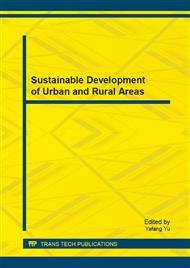[1]
Yongji Zhang. Flocculation in industrial organic wastewater treatment application [J]. Industrial Water Treatment . 1991, 11 (3); 11-13. in chinese.
Google Scholar
[2]
Zhiqing Huang, Xinghong Yan. Seaweed overview of the development of research and development [J]. Marine Technology, 2002, 21 (3): 21 - 25. in chinese.
Google Scholar
[3]
Chunmei Wang, etc. Synthetic organic polymer flocculant and its application [J]. Industrial water and wastewater . 2002, 33 (1) : 33-35 in chinese.
Google Scholar
[4]
Xuxiang Li etc. Modified starch flocculant treatment of dyeing wastewater [J]. Chemical Environmental Protection . 1994, 14 (5); 313-314. in chinese.
Google Scholar
[5]
State Environmental Protection Administration of Water and Wastewater Monitoring Analysis Method Editorial Board of Water and Wastewater Monitoring Analysis Method [M]. Beijing: China Environmental Science Press, 1989: 354-356 . in chinese.
Google Scholar
[6]
Shaowen Wang, Zhitang Luo, Qian Lei. High concentration organic wastewater treatment technology and engineering application [M]. Metallurgical Industry Press . 2003. in chinese.
Google Scholar
[7]
Qiao Zhang, etc. prepared in situ click chemistry reactions alginate hydrogels [J]. Wuhan Institute of Technology, 2011, 33 (7): 13 - 21. in chinese.
Google Scholar
[8]
Yokoi H, Natsuda O, Hirose J, et al. Characteristics of Biopolymer Flocculant Produced by Bacillus sp. PY-90[J] . Ferment Bioeng, 1995, 79: 378-380.
DOI: 10.1016/0922-338x(95)94000-h
Google Scholar
[9]
Shimofuruya H, Koide A, Shirota K, et al. The Production of Flocculating Substance (s) by Streptomyces Griseus [J] . Biosci Biotechnoly Biochem, 1996, 60: 498-500.
DOI: 10.1271/bbb.60.498
Google Scholar
[10]
Mao Yanli, etc. Advances in FLocculation Mechanisms and Research of Water-treatment Flocculants[J]. Journal of huazhong university of science and technology,2008,25(2) : 78- 81. in chinese.
Google Scholar
[11]
Kurane R. Production of a Bioflocculant by Rhodococcus Eryt hropolis S-1 Grown on Alcohols[J] . Biosci Biotech Biochem , 1994, 58( 2) : 428-429.
Google Scholar


